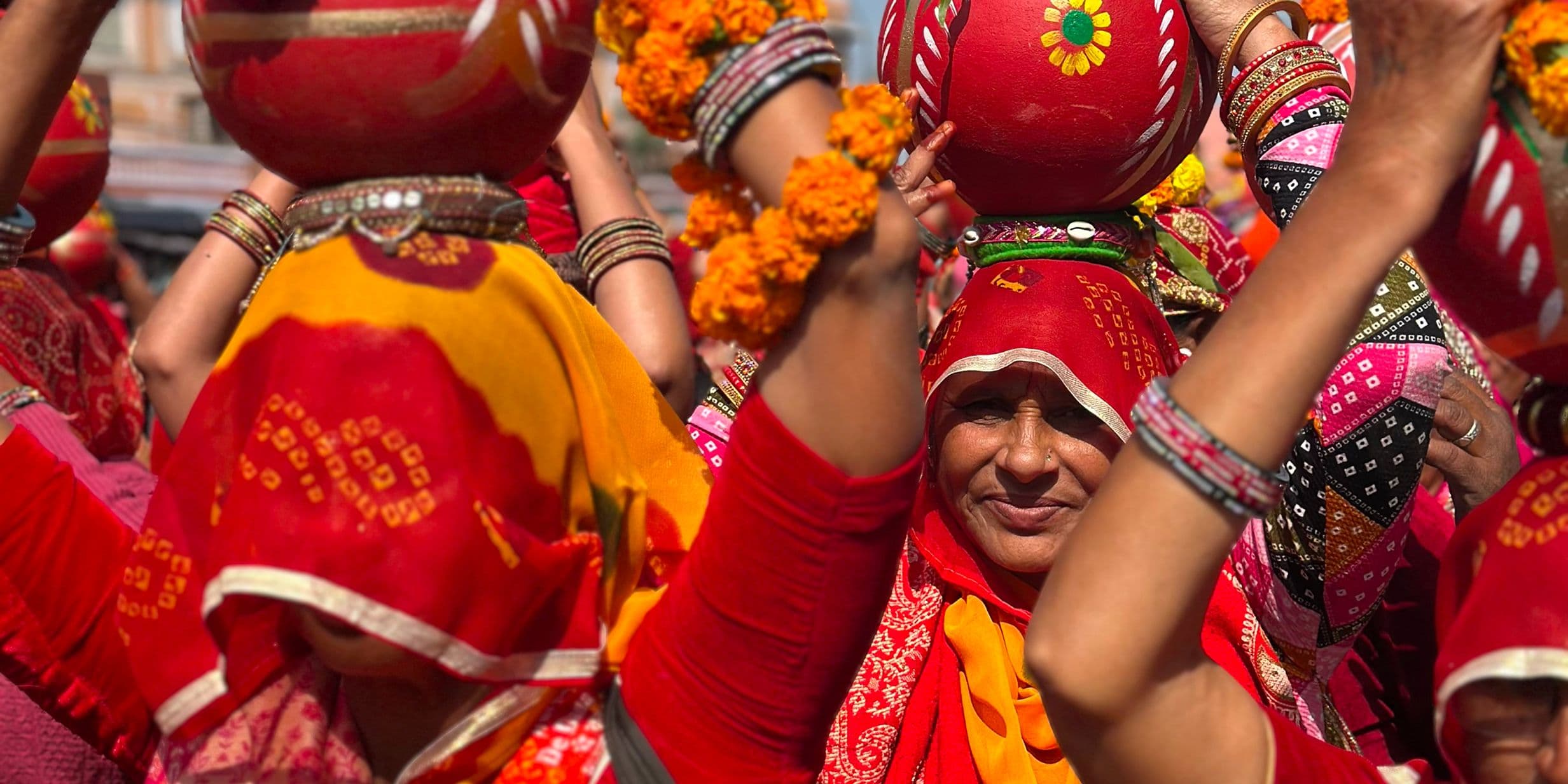Travel
Six Iconic Shots: Rajasthan in light, colour and stillness
Pink palaces, blue rooms, flower markets and striped silhouettes – the state is a dream for anyone drawn to beauty


Travel
Pink palaces, blue rooms, flower markets and striped silhouettes – the state is a dream for anyone drawn to beauty


Earlier this year, I travelled to India’s northwestern state of Rajasthan for a trip that was years in the making. Invited to stay with friends who have created two of Jaipur’s most beautiful boutique hotels, The Johri and 28 Kothi, I was eager to feel the beautiful chaos of its cities and the soothing majesty of the natural landscapes.
A region of palaces, temples, lakes and tigers, it is also, of course, a dream for any photographer, whether budding or professional. Each street, each corner, each market and each view affording endless opportunities for the lens. So slow down, take your time and try to find stillness that allows your images to reveal themselves with clarity.
Photo: Kate Lough
When spending time in the Pink City, as Jaipur is known, visiting the Unesco-protected Hawa Mahal, or Palace of the Wind, is a must. Built from terracotta pink sandstone with 958 ornate windows, it wouldn’t look out of place on a Wes Anderson film set. Interestingly, it’s the back of the Hawa Mahal, which faces onto the bustle of the main street, that you’ll want to photograph. Instead of trying to capture the entire beauty of its five floors, choose a section to frame and hone in on its artistic details, which are a signature of Jaipur’s 18th century architectural planning. And don’t be afraid if road traffic gets in your way, inevitably it will and inevitably it will add something.
Photo: Kate Lough
You’ll have to get up early for this one, but it’ll be worth it. Jump in a tuk-tuk and ask to be taken to Jaipur’s flower market. As the city rises from its nightly slumber, cloth sacks and old diaphanous saris are laid out on the ground to unveil the colourful cargo within – a riot of yellow, orange and pink marigolds cascade out like a waterfall. While some are stitched into long garlands for wedding parties, others are stripped for petal confetti; and the just-after-dawn-scene makes for quite the photo opportunity.
Photo: Kate Lough
The royal family of Rajasthan still lives in its City Palace, which the public can visit. At an extra cost, you can take a guided tour of its more hidden corners, including the magnificent Blue Room. For this alone – one of the most exquisite places I have ever visited – the ticket is worth it. Officially called Chhavi Niwas, the Blue Room was designed for the maharajahs to enjoy during the summer’s monsoon rains. Painted intricately in striking blue and white, it is decorated with motifs inspired by nature and celestial elements, making it a joy to photograph. Make sure to get one one of its jovial guards, wearing traditional red safas (turbans) and navy achkans (a tailored, knee-length garment), in your picture.
Photo: Kate Lough
Of course, there are endless forts, palaces and temples to visit and photograph in Rajasthan, and especially in Jaipur. But, in truth, its street life is just as outstanding when it comes to imagery. Head to anywhere within the Old City’s fortified pink walls and you will be spoilt for choice for where to point your lens. One afternoon, as we walked through the Johri Bazaar – where you will find enough jewellery stalls and stores to sate a magpie – we chanced upon this colourful procession of women balancing painted pots on their heads. A beautiful coincidence.
Photo: Kate Lough
If you make the historic Amer Fort part of your Rajasthani itinerary, be sure to stop at the ancient stairwell in Amer called Panna Meena ka Kund. Built in the 16th century as a way to collect rainwater, its symmetrical architecture with crisscrossing sets of stairs is simply stunning and extremely photogenic. With its ingeniously engineered eight stone stories, there are plenty of angles to capture.
Photo: Kate Lough
After six days in Jaipur, trying to explore this magical city at a relaxed pace, I headed into the Rajasthani countryside to Ranthambore, a magnificent national park where tigers roam. Staying in traditional Mughal tents at Aman-i-Khas, we were woken up one morning with cups of tea and the hope of seeing tigers. A game drive that started out with little promise turned into an hour of almost constant tiger spotting, with a pair of siblings padding past our open-top vehicle in all their striped glory. When photographing tigers, stay calm and pick your moment wisely. You might not have long to get the shot…